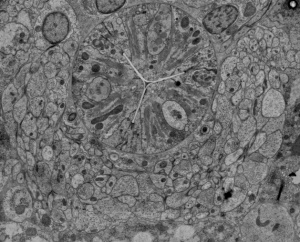 Long time friend and fellow Sommer Lab postdoc just had a great paper come out in the most recent issue of Cell. Though I didn’t contribute anything intellectually to the paper, I was able at least to help them out with a couple images for Figure 1. I think the paper is a good demonstration of why one shouldn’t be afraid of working with non-standard model organisms.
Long time friend and fellow Sommer Lab postdoc just had a great paper come out in the most recent issue of Cell. Though I didn’t contribute anything intellectually to the paper, I was able at least to help them out with a couple images for Figure 1. I think the paper is a good demonstration of why one shouldn’t be afraid of working with non-standard model organisms.
Erik (along with Manuela Müller and Christian Rödelsperger, also in the lab) explores the mechanisms by which developmental plasticity Continue reading








